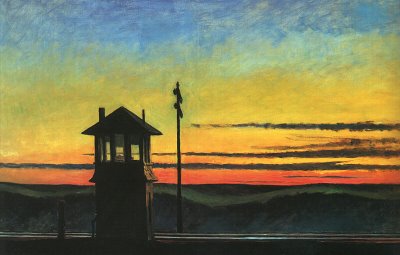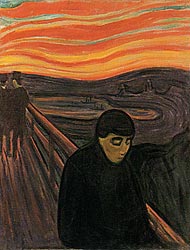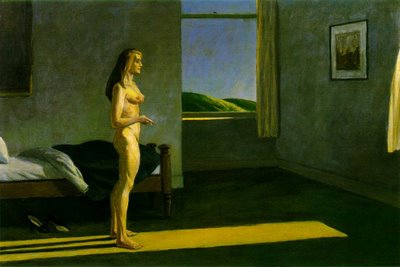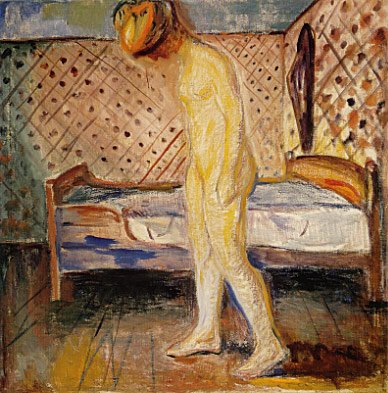September 3 Fourth Floor and Sculpture Court (Minimalist Art)One of the great things about this exhibition is its artful layout. In many cases (especially in the middle floors) the arrangement of the artworks is flattering and revealing and playful, very much in keeping with the exhibition's references to viewing and glimpsing and seeing.
September 10 Lobby Gallery (Calder Circus)
October 1 Film/Video Gallery (Christian Marclay's Video Quartet--a must see!)
October 8 Third Floor ("The Pure Products of America Go Crazy")
October 15 Second Floor (Abstract Expressionism)
December 3 Fifth Floor (Edward Hopper survey)
The work that left the greatest impression on me (and very likely the visitors with me) was Video Quartet by Christian Marclay. About fourteen minutes long, it's a mix of sound and footage from movies (mostly Hollywood musicals) on four screens, very stimulating and engaging. I had trouble finding even the most basic information about it via the Whitney, so I had to rely on gallery expert Eric to help me out and get me started on a Google search that brought me to this and this and this.
The Hopper floor emphasizes the diversity of the artist's work. There are the paintings, but there are also commercial illustrations and sketches that made me realize how very much Hopper has in common with film noir cinematographers.
The biggest revelation for me, though, was noting affinities between Hopper's work and that of Edvard Munch. The museum suggests that Edward, who visited Paris during the early part of the 20th century, wasn't much influenced by the avant garde, but I'd say that Edvard was pretty much on the cutting edge and that Edward's colors, composition, figure modeling, and scenarios seem influenced by the Norwegian artist's work. I'm sure that I could come up with even better examples than the following, but...
Here's Hopper's Soir Bleu (1914; Oil on canvas, 36 x 72 in./91.44 x 182.88 cm).

And here's Munch's The Dance of Life (1900; Oil on canvas, 125.5 x 190.5 cm)

Here's Hopper's Railroad Sunset (1929; Oil on canvas, 29 1/4 x 48 in./74.3 x 121.92 cm).

And here's Munch's Despair (1893-4; Oil on canvas, 92 x 72.5 cm).

Here's Hopper's A Woman in the Sun (1961;
Oil on canvas, 40 1/8 x 61 1/4 in./101.92 x 155.58 cm)

And here's Munch's Crying Girl (1907; Oil on canvas, 121 x 119 cm).

Thanks to the Whitney as well as CGFA, Mark Harden's Artchive, and Edvard Munch--The Dance of Life Site.




No comments:
Post a Comment